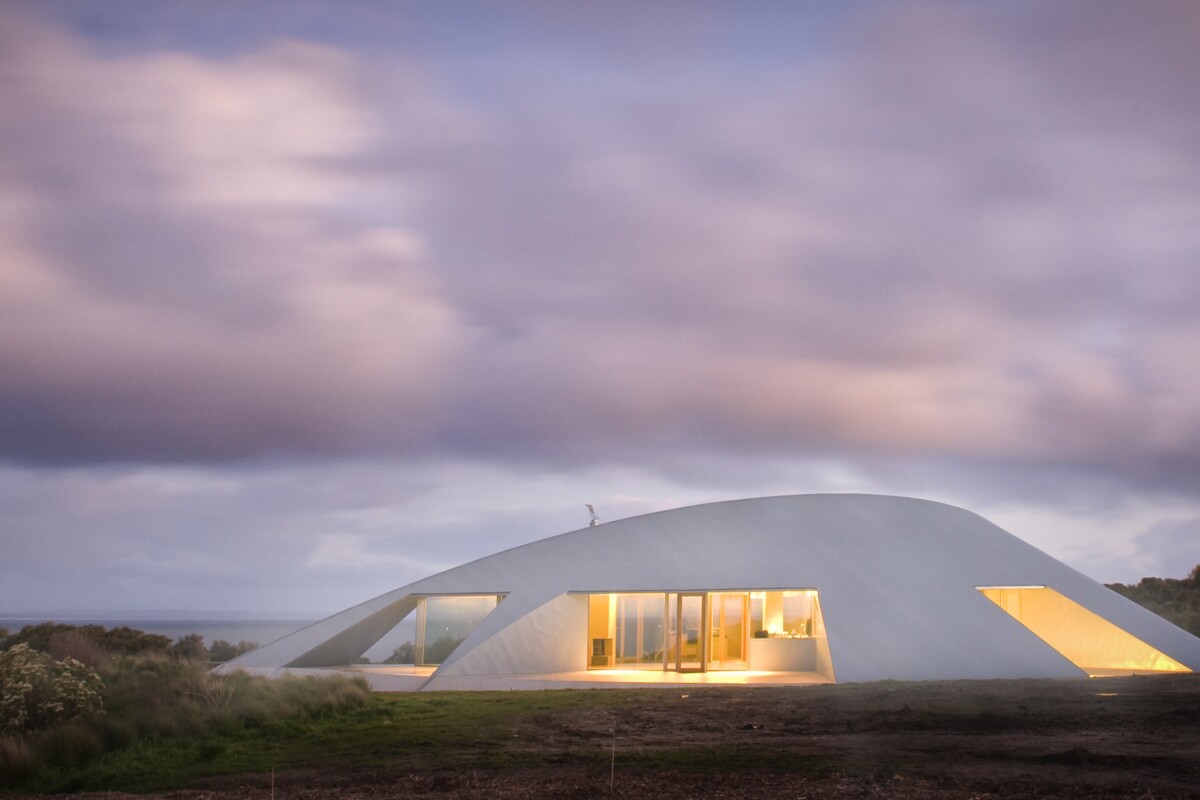Located on the south coast of Victoria, Australia, Crofthouse offers its owners a simple and sustainable home which blends into its natural environment while also capturing the vast coastal views.
The home boasts a low embodied structure made from natural and locally sourced materials, including a timber frame and internal high thermal inertia pressed sand walls. Designed by Australian architect James Stockwell, the house was recently awarded the Alan and Beth Coldicutt Award for Sustainable Architecture as part of the 2013 Victorian Architecture Awards.
The striking eco-home, which almost looks like a grounded spacecraft, was described by the judges as a standout entry from a field of 240 buildings. “Crofthouse may be the introduction to a new architectural paradigm where man-made buildings do actually work in such a way with nature that they actually work as one,” stated the judges.
“Ground hugging buildings and earth integrated buildings blend with the landscape and reduce 'wind chill' factor on the building,” James Stockwell tells Gizmag. “Use of softwood trusses and rammed earth is quite low tech and can be approached by most builders and owners.”
The home is shaped in the form of a half moon, which gives privacy to the outer rooms and maximizes the surrounding views. The shape of the home also meant that Stockwell didn’t need to build conventional walls or closed spaces. Each room remains open and spacious and each zone is delineated via a staggered wall panel. “The house looks shielding and internalized but when you are in it it is completely open and you can see in all directions past the angled buttresses,” says Stockwell.
Stockwell was inspired by the idea of creating a home that seemed to be formed by the elements of wind, rain and sun. He combined all of these elements into the home through the inclusion of a passive solar system, fast growing landscaping to shelter the home from the wind while also providing firewood for the winter season, and lower wall heights, which allow the open internal spaces to passively regulate their temperatures via thermal mass and cross ventilation. This means the home will remain cool in the summer and warm in the winter.
The home’s modern and simple interior finishes include polished concrete floors, soft wood paneled walls and ceilings, enormous double glazed floor-to-ceiling glass windows and a large central fireplace. Furthermore the shape, design and materials used provides the home with a high fire protection, something of the utmost importance in Australian regional areas.
Source: James Stockwell, Victorian Architecture Awards via Dezeen

















